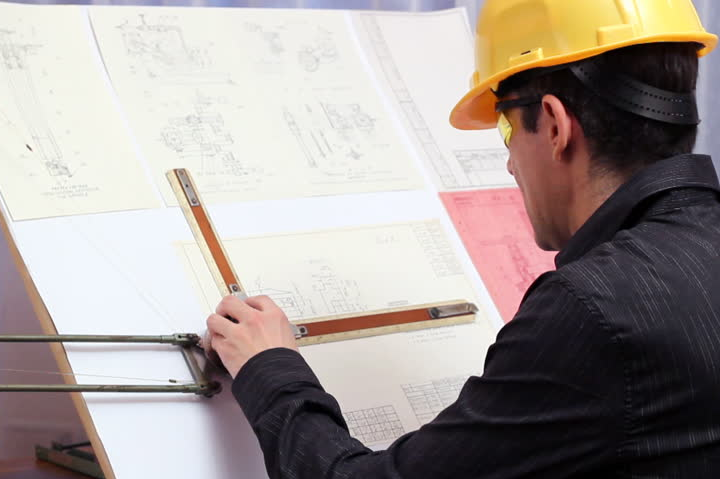Like most companies today, you too are probably facing the ever-present demands of the markets you serve. Your stakeholders (shareholders, employees, customers and partners) demand high growth and better market performance of your products. You have no doubt, a fine-tuned set of market metrics that you track every month, quarter and year. Your industry perhaps also has some specific metrics that you track frequently as well. You probably obsess and fuss over these performance metrics from time to time, seeking opportunities to constantly improve them. Our experience in working with customers from various industries has led us to believe that your strategic market challenges can be traced to a few root causes, which we will try to unpack in this article. We will also discuss how you can adopt the Agile mindset to overcome these strategic challenges.
Speed to Market (Market Agility)
The first and foremost challenge that companies face today is speed to market. Speed to market measures how fast you can release your products – from concept to market release. This applies not only to new products, but also to new product features and updates to product features. You probably have a sub-optimal speed to market, with limited ability to release new products or product features quickly. You probably also have trouble reacting quickly to market changes. Poor Market Agility is another way to describe this challenge, and this is the number one market challenge that we observe.
Misaligned Products
Second key challenge that companies face today is – misaligned products. Your products and services are not perfectly aligned with the market needs and customer needs. This likely results in a smaller market share for your products. Due to the limitations of your product development process, you are unable to develop the right products and product features your customers value the most. Largely this is a result of either your product development process being driven by engineering, or a result of your business teams not being in touch with the market dynamics.
Poor Customer Experience
The third key challenge that companies face today is poor customer experience. Poor customer experience is anchored to your products, but it goes well beyond that. Poor customer experience is driven by poor product features, poor user experience, as well as poor customer support interactions. How you treat your customers is as important as your products and product features themselves.
Execution Risk
The fourth challenge that companies face is Execution Risk. Execution risk arises from poor planning, communication and visibility across the organization. Indeed, risk is a constant part of our lives and we cannot do away with risk altogether, in spite of our most careful planning. Execution risk leads to product launch delays, sub-optimal product features released, and worse still –product recalls and post-production quality issues that can be very damaging to the company brand.
The Root Causes
In trying to understand the root causes of the strategic market challenges, it is instructive to start with the product delivery value-chain. The value-chain of the product delivery process graphically illustrates how you interact with your customers and markets, and how these dynamics then shape your internal processes for product development. The business teams in your organization – such as marketing and sales are your front lines that face the markets and customers. They have a good pulse on what the markets and customers demand and value. The sales and marketing teams interact with the product management function – whose mission is to align the product features with the market needs. Product management is the liaison between the business teams and engineering teams. The engineering teams develop the product and once released, product support takes care of supporting your customers who are using the products.

Engineering Driven Product Development

The value-chain of product delivery in your organization holds some of the key answers to your strategic market challenges. We have observed that in organizations where product development is dominated and driven by engineering (or IT), and business teams are not actively engaged in the process, you often end up with a number of the these strategic challenges. When business teams are not actively driving the product development process – particularly in deciding what product features are prioritized, your products can be misaligned with the customer and market needs. Product features can get prioritized for the wrong reasons (such as “cool technologies” that customers don’t care for). But even when business teams are driving the product development process, it is critical that they have a good pulse on the customers and end-users, using tools such as market intelligence, UX (User Experience) research or market research. This is not always the case; business teams also need to be fully optimized to make the most of their interactions with the markets and customers.
Key Takeaway: Business teams need to drive the product development process and ensure that customer and market needs are met with the right set of product features. They need to take an active role in the product delivery and collaborate as equal partners with engineering and IT.
Legacy Mindset for Product Development

According to TechBeacon, only 16% of organizations primarily use the Agile methodologies across their projects. If your organization uses legacy development methodologies (i.e. not Agile) you are probably not well optimized to respond quickly to market changes. Long cycle times, wasted effort and re-work, poor communication and collaboration are only some of the few symptoms of using legacy methodologies. Indeed, if you haven’t already done so, embarking on an Agile transformation journey could be one of your most important steps you can take to mitigate some of your strategic market challenges, especially Market Agility. An Agile mindset applies beyond the development process, to other functions as well – such as marketing, sales, support, operations. The Agile mindset of small, self-governing teams, focus on customer, incremental delivery, and minimal documentation are all effective ingredients for improving your market agility. The Agile transformation journey should be traveled very carefully and deliberately, fine tuning and optimizing along the way, in the true spirit of the Agile mindset.
Key Takeaway: Product development using an Agile mindset needs to be a high priority as an organization, but over the long term you need to consider adopting the Agile mindset in other business functions such as marketing, sales and operations. This will help you achieve superior market agility.
Poor Communication and Collaboration

Poor communication and collaboration are a major inhibitor of market agility, and contribute significantly to execution risk. Indeed, the role of communication and collaboration is even more vital when we are increasingly dealing with knowledge based products, such as software and services. Poor communication leads to wasted effort and unnecessary re-work that degrades product quality. Poor collaboration inhibits sharing of ideas which slows down innovation. Collaboration is the “mother’s milk” for innovation. If you have remote or distributed teams, the problem gets compounded further. It is very difficult, if not impossible, to get all your employees, partners and third parties under the same roof. Getting face-to-face time for communication and collaboration is increasingly difficult these days – where teams are often remote, distributed or even offshore. External collaboration with your business partners and customers is equally important as internal team collaboration. While modern tools can help with Collaboration, true Collaboration is achieved by an underlying organizational culture that encourages sharing of ideas.
Key Takeaway: Collaboration and communication are must have ingredients for innovation. A conscious effort to improve these must focus on both internal as well as external collaboration, while fostering an organizational culture of open and honest communication.
Poor Employee Engagement

Your employees may be disengaged from the product development and innovation process. Their work environment is not engaging and conducive for innovation. They may be doing a lot of manual activities that are low value-add and tedious. They may not be given the right opportunities to contribute to new product ideas and innovation. They spend too much time fixing existing broken products, struggling with a legacy process and legacy toolset. When employees disengage from innovation and value creation process, it is very difficult to fine tune and optimize your market agility. It is a major stumbling block that limits your market performance.
Key Takeaway: Engaged employees are a key asset that you want to nurture. Think creatively about ways to increase employee engagement – the payoff will be huge.
Difficulty in Attracting and Keeping Top Talent

Attracting and keeping top talent is a challenge that every company faces today, to varying degrees. Unless you are at the forefront of innovation and technological advancement, like most companies you struggle to fill your key jobs. The jobs of the 21st century increasingly require advanced technical skills and there is a lack of qualified and skilled workers readily available, and willing to relocate to where these jobs are. As a result, you constantly struggle with the talent issue. New emerging areas of technologies such as data and analytics mean that you may need to constantly retrain your workforce to just stay current. Today, the top talent has far higher expectations from their employers, and you need to constantly tailor your work environment to meet these expectations. This may include modern and innovative work spaces, flexible work arrangements or unique benefits. You also should figure out how to get the most from your current employees – avoiding the need to hire that extra person in the first place. Indeed, engaging and getting more from your current employees may be one of your best moves in fighting the talent war.
Key Takeaway: Recognize that in order to win the talent war, you need to differentiate and offer a work environment that is desirable for your target employee. Also, get the most from your existing workforce before hiring new workers.
Lack of Focus on the End User

End users today are pickier and savvier than ever – they demand utmost perfection when it comes to ease of use and visual appeal of your products. You can no longer throw your products over the wall and expect your customers to love your products. User Experience (UX) is the new frontier where companies can differentiate their products and build products that customers will love and embrace. UX and UX research are key new tools in your arsenal in creating that “vow!” customer experience that leads to market differentiation of your products. Having a clear and well-articulated UX strategy is a good starting point in fixing this issue. Once a UX strategy has been developed, operationalizing it is the next step by integrating it into your product development process. Consistent with the Agile mindset, you will want to roll this out incrementally, calibrating it carefully as you move forward.
Key Takeaway: Making UX a key ingredient of your product development process from start to finish, is where you want to end up eventually.
Embrace the Agile Mindset
Embracing the Agile mindset is a great first step towards improving your market agility. According to Harvard Business Review, you can adopt a roadmap to embrace the Agile mindset. Empowering your business teams to drive the product development process is another step you can take to better align your products with the market. Improving Collaboration and Communication through a shift in the underlying organization culture is another move that will pay off. Collaboration will encourage sharing of ideas which will lead to more innovation and better products. You should adopt UX as a key dimension of the product development process – improving your end user and customer experience. The fight for best talent is an ongoing one, you need to recognize this and offer better working environment for your employees, as well as get the most from your current workforce. Engaged employees are a key asset; find ways to create a more engaging and fulfilling work environment for them. Eventually, you will want to make the most of an Agile mindset by rolling it out to the business functions, in addition to the core product delivery process.
What do you think of these strategic challenges, and how have you overcome them? We welcome your thoughts in the comments section below.

